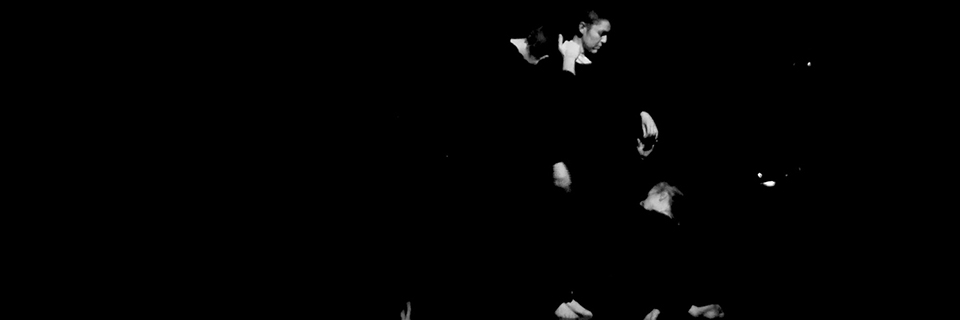Orbital Resonance is an exploration into responsive environments and live performance. The performers improvise with sound and movement through breathe, voice, and bodily sensors. In the process, the performers experiment with different internal physiological states of their bodies outwardly displaced in light and in sound to create an immersive sensual environment for them and for the audience. The larger environment merges the interactions between various elements (audience, performers, light, sound, architecture, sensors) into a unified, existential orbit.
A performance and discussion took place as part of the Topological Media Lab‘s Re-Mediation Series on April 23 and 24, 2014 from 5-7pm at the Hexagram Blackbox at Concordia University. The performance was supported by Hexagram-CIAM Student Grant.
http://orbitalresonance.
PROCESS
The project was a collaboration between artist and PhD Humanities candidate Margaret Westby and interactive developer, creative engineer and an MA Special Individualized Program candidate Nikolaos Chandolias with participation from experimental musician and sound artist Doug Van Nort and performance artist, facilitator, and sociologist of digital technology Anne Goldenberg. Westby and Chandolias participated in every aspect of the process: initial research questions, conceptual and creative content, technological research and development, workshop and rehearsal directives, set-up of space and scenography, organization, promotion, documentation, and all other tasks. Van Nort and Goldenberg collaborated at specific rehearsal days to assist in workshops, conceptual and technological development, and performance creation and dissemination.
The process and methodologies undertaken to create this research-creation project were quite complex. We followed current threads in open source projects (software and movement creation) informed by the DIY (do-it-yourself) ethos, developing new methods of choreography for sonic performative environments and technological design informed by and for the body. The materials in play were biological sensors, language, movement, gestures, sound, lights, cameras, computers, and various other technological apparatuses. We dove into movement exercises based upon the Skinner Release Technique, Viewpoints, contemporary dance, and more current cross-fertilizations in yoga and Open Source Forms (OSF). This combination of kinaesethic methodologies informed our exploration to integrate both human and nonhuman materials. In addition, experimental music practices including Deep Listening by composer Pauline Oliveros and improvisational techniques in both sound and movement informed our process and creative content. Furthermore, an attuned focus on maintaining a horizontal collaborative spirit was key at all time. This involved continuous discussions around language, teaching and patience with different practices, and an understanding of knowing and accepting limits, whether with the technology or within ourselves.
A performance was presented as a result of a two-month long residency at Concordia’s Blackbox, with the objective of creating a space where we could blur the lines of performer and audience. The immersive, responsive environment invited co-creations to occur between the performers, the space, the spectators and the technology in a non-linear, non-hierarchical and non-dictatorial way.

